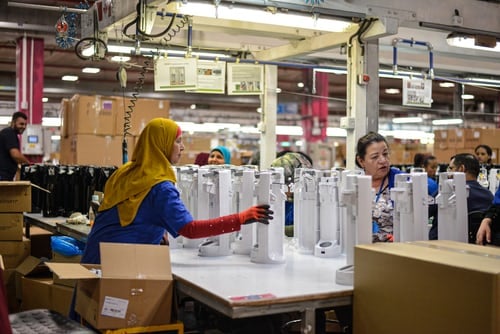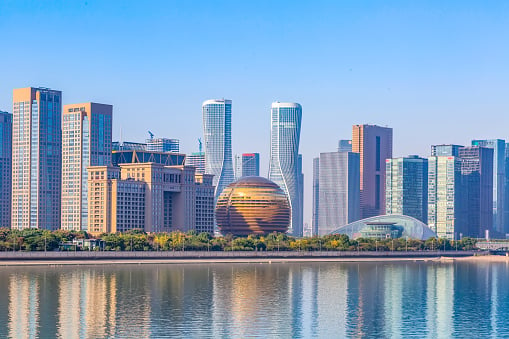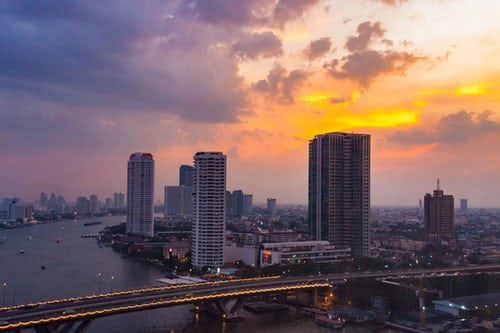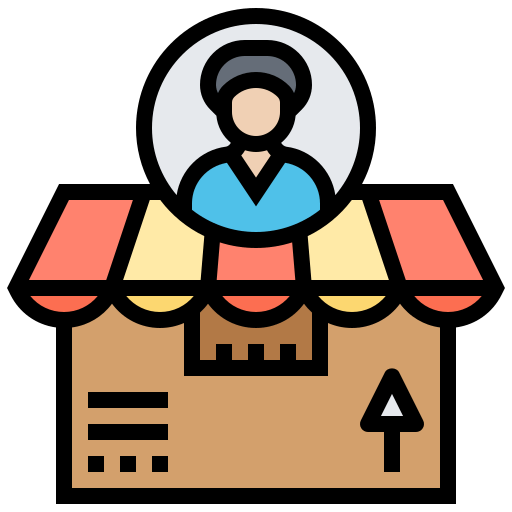Low-cost country sourcing (LCCS) is a strategy to reduce production costs.
In this type of sourcing, a company sources materials, technology, or services from a low-cost country to cut operating expenses.
Thus, the trend of low-cost country sourcing is rising each day. This practice comes under widespread procurement efforts, which we call global sourcing.
Many times, low-cost countries have a well-established stable supply chain. It makes them a suitable contender for market expansion.
If you plan to start strategic sourcing, you must learn more about this type of sourcing.
Low-cost country sourcing can help you derive the most out of supply markets.

What’s the low-cost country sourcing?
Nowadays, businesses around the globe prefer to use a well-planned procurement strategy to source products.
They choose low-cost countries over local suppliers.
Some low-cost countries have a stable political environment, lower labour costs, modern infrastructure, and an established supply chain.
As a result, businesses can cut operating expenses and reduce shipping troubles greatly.
At the same time, it also helps companies stay on the competitive edge. This whole procurement strategy of low-cost country sourcing promotes financial growth.
Besides, it maintains a demand-supply balance globally.
Suggested reading: Sourcing agent
Advantages of low cost countries

A low-cost country sourcing provides many benefits to businesses. Let’s check out!
1. Low Production Cost
Companies often need to invest a considerable amount in production when materials and labor costs are expensive.
It stops them from completing large volume orders.
But when companies choose low-cost country sourcing, they experience exceptional production efficiency at a low cost.
Low cost countries have been the FIRST PREFERENCE for me. It is because of higher profits.
2. Government Policies
You can compare the policies of low-cost countries with west European nations or even eastern Europe.
You will notice a massive difference in perks offered by respective governments.
A low-cost country experiences economic growth due to the flow of investors.
Thus, their governments often promote the manufacturing sector by offering an acceptably compatible legal system. It gives several perks to suppliers.
3. Category Management
If you select the correct country with a trained workforce, you can think about different product categories.
That’s because a skilled workforce can work on many tasks at a time.
Companies cannot rely on local suppliers when it comes to category management.
Instead, they can choose low-cost country sourcing as it allows you to expand the product catalog.
4. Labor Availability
In a low-cost country, you can find many suppliers and manufacturers selling their products at competitive rates.
They can offer such lucrative prices because of the vast availability of labor.
5. Ease of Transportation
If product shipping becomes a nuisance, you get less time to focus on your business growth.
Many businesses operate as freight forwarders in low-cost countries to ease the transportation process.
Besides, some low-cost countries also have an acceptably compatible legal system, including fewer customs duties, less documentation, etc.
Suggested reading: Top 20 us sourcing agents
Some low cost countries you must know
Companies looking for affordable manufacturing costs can check out the below list.
Here we will list only those countries that fulfill the primary principle of low-cost sourcing.
1. China

Sourcing products from a manufacturing hub, China, can be inexpensive and very lucrative. This country fulfills all the necessities of product sourcing.
You can find potential suppliers in provinces like Guangdong, Zhejiang, Jiangsu, etc. Moreover, you don’t have to deal with supply chain planning when sourcing from China.
Investors consider this country to produce almost any item. You may want to source wholesale products if you work in a broad category such as electronics or textile.
Chinese suppliers can offer these products in bulk quantities. It can help companies with category management for broad products.
The availability of a skilled workforce further simplifies the sourcing operations.
For example, a well-trained workforce can run production lines with minimal supervision, help you with packaging and shipping works, etc.
As a result, this country has become a perfect low-cost sourcing destination for most investors.
My recommendation!
China is my favorite and will always be. It is because of lower prices and higher profits.
Pros:
- Skilled labors
- Low operational costs
- Firm supply chain
Cons:
- Language barrier
- Quality issues
2. Vietnam

Vietnam is growing as an ideal option to start low-cost country sourcing. If a business wants to run multiple production lines at a lower cost, this place can fulfill this need.
Moreover, the wages at this place are low compared to many other Asian countries.
The country’s workforce is increasing each year. So, it can help you increase the production volume, thereby reducing the production cost as well.
Investors working in the textile and electronics sectors consider this place an ideal low-cost option.
Pros:
- Inexpensive workforce
- Great for textile and electronics
- Friendly work environment
- Competitive wages
Cons:
- Language barrier
- The workforce is less-skilled in the technology sector
- No supply chain
3. India

Remember, your shift to low-cost sourcing may not work as an overnight fix. It may need considerable planning, market analysis, and research.
You can consider placing India in your list of low-cost sourcing destinations.
This country has a strategic location that can suit foreign companies that want to expand their business in Southeast Asia and other parts.
India is among the supplier countries for Pharmaceuticals, automobiles, and electronics. Investors can get a lower cost on both production and shipping of these items.
Pros:
- Skilled workforce
- No language barrier
- Great for sourcing services
- More relaxed policies
Cons:
- Limited product differentiation
- Hard to plan cost-analysis
4. Thailand

This country can become an excellent example of a stable, export-driven economy. It has been enjoying the growth of double-digits in the past few years.
In other words, it also means that Thailand is a great option for those looking for low-cost sourcing.
However, the major exports of this country include expensive items like gold, diamond, and refined petroleum.
Nevertheless, investors consider this place an ideal option for producing office machine parts, vehicle parts, integrated circuits, etc.
The workforce is skilled yet inexpensive, making Thailand an excellent option for low-cost sourcing.
Pros:
- Export-driven economy
- I have set up a business. It is very easy to open new businesses
- A well-trained and young workforce
Cons:
- Tariffs can be on the higher side for some investors
- Workforce lacks foreign language skills
Want to Import Products from China?
Leeline Sourcing helps you find factories, get competitive prices, follow up production, ensure quality and deliver products to the door.
Suggested reading: Import Tax From China To US
The best sourcing strategy to ensure the low cost
Your transition to low-cost sourcing may not be an easy task. It often takes a lot of planning in the initial stage.
Companies must assess how their new strategy can impact their broader business objectives.
Below are some golden rules that can help you ensure low cost while transitioning.
1. Know the Tax and Tariff Structures of a New Place
Remember, the tariff charges in the importing country and export taxes in the exporting country may differ.
And I often face difficulty in a new place. Take a look at the TAXES at first.
Not all low-cost countries can turn out to be beneficial when you consider this ratio.
Make sure you invest in countries with a free-trade agreement with many other countries. It can help you save tariffs and taxes that may turn into potential profits.
2. Cost Analysis Is a Key
I always calculate the costs. Whether I am buying or selling, cost analysis keeps me aware.
Make sure you conduct a detailed cost analysis before choosing a specific country for low-cost sourcing. Your cost equation must count different factors.
Besides tariffs and taxes, you should also consider the shipping fees. Any country with a well-established supply route can prove beneficial in this regard.
Moreover, you can also consider a few more factors like the infrastructure, logistics, availability of sub-suppliers, etc.
That’s because these factors usually affect the cost if anything goes wrong.
3. Define Your Quality Standards
Low-cost sourcing consists of different factors. Of course, the availability of an inexpensive, trained workforce is a primary requirement.
But you must also consider adding the quality factor.
Some companies invest in quality inspection to overcome this issue. It can assure companies of high-quality products within their budget.
4. Figure Out Potential Risks

Sometimes poor management leads to suppliers failing to meet your service timeline. A company engaged in a broad category, like electronics, cannot afford late deliveries.
In short, a stopped or discontinued production line can cost more than the profit of sourcing from a low-cost country.
Thus, count all potential setbacks during your initial market analysis.
5. Check the Political Stability
A trained and cheap workforce cannot do wonders alone. They need a strong political will to sustain a continued production.
Political instability means your business is HANGING on a hill. I won’t recommend taking a risk.
Whether external or internal, small political turmoil can affect supply lines.
6. The Availability of Raw Materials
Companies cannot rely on sourcing raw materials and parts from different countries.
It will be more like setting up just an assembly unit in a low-cost country.
So, businesses should focus on countries that have a pool of sub-suppliers. These suppliers can provide materials that can reduce production costs.
7. Mature Supply Chain
As you know, the supply route defines the profit margin. If there is no established supply chain, products can take forever to reach their destination.
For example, I have to ship a product from China to the US. If there are bad relations between two countries, the supply chain breaks at SHIPPING. You failed champ!
What’s more, it would cost even more than the defined profit margin.
Thus, ensure the low-cost country has a mature, well-established supply chain.
With this, the goods can travel in a pre-defined line to lower the shipping costs.
Suggested reading: Sourcing from Asia
Suggested reading: Best Small Manufacturing Companies
FAQs

What Does Low-Cost Country Mean?
A low-cost country is more like any other country doing business globally. But the only difference is that the overall operational expenses in this country are low.
These countries have a clear supply chain visibility and modern infrastructure.
Besides, you can enjoy a lower cost of labor and materials in these countries.
How Does Low-Cost Country Sourcing Work?
Low-cost country sourcing (LCCS) works on strategic sourcing. These countries obtain sourcing efficiencies due to multiple factors.
Firstly, they have a stable supply chain that allows easy movement of products. Besides, they also have a stable political environment.
Suppose a company sources materials from LCCS. The material will pass through an already established supply chain.
Plus, there won’t be many legal formalities imposed by the government.
What Are the Common Challenges in Low-Cost Country Sourcing?
Of course, supplier countries never leave a blank space to complain about while sourcing products. But certain situations can go beyond control.
You must have some basic local knowledge about the country. For example, low-cost sourcing consists of several talks between the supplier and buyer.
Thus, you may face a language barrier during low-cost sourcing.
What Is the Main Benefit of Low-Cost Sourcing?
The primary principle of product sourcing is to obtain sourcing efficiencies.
You cannot see such efficiencies in west European nations and other countries where operating costs are high.
Moreover, a well-established supply chain is another benefit of this country sourcing. It lets your products move smoothly yet fast.
Suggested reading: Sourcing websites
Final thoughts

Having a proper product sourcing plan in place is essential in today’s world.
It’s not like only those countries that cannot afford to pay expensive charges of local suppliers should choose low-cost sourcing.
Every business needs to preserve its best interests by lowering the production cost and increasing the profit margin. A good product sourcing approach can help keep this interest.
The language barrier can often stop companies from getting a reliable supplier from low-cost countries.
So, hiring a local product sourcing service can prove to be the best solution.








